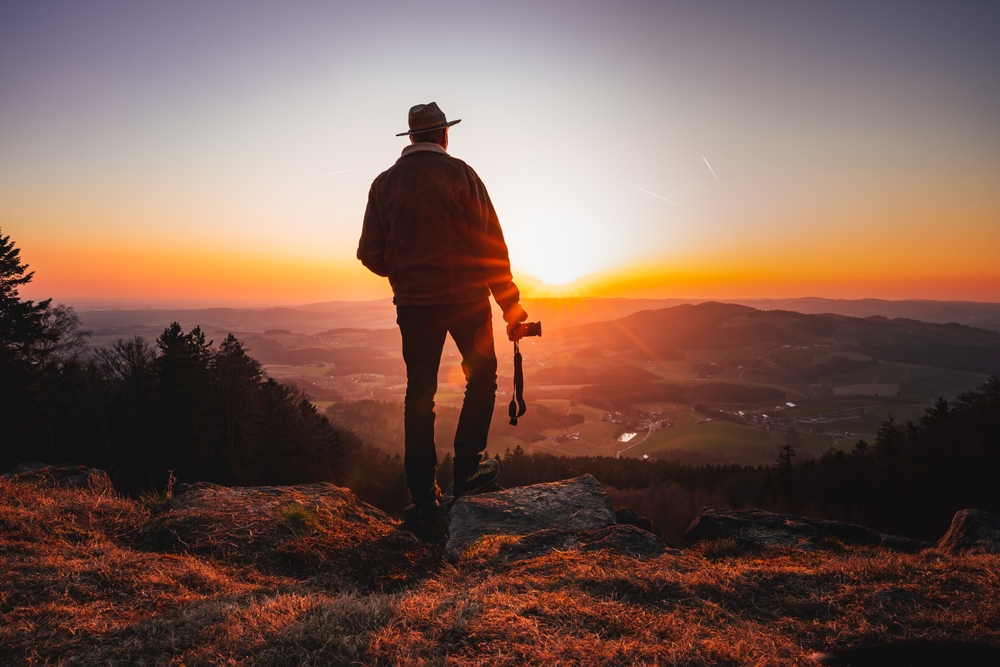These foolproof tips will keep all of your plants alive and watered when you’re away.
Even though it’s a vacation, going out of town can be stressful, especially if you’re traveling long distances, or if in-laws are involved. By the time you get your bags packed, kids in the car, pet care organized and travel plans sorted, you’ve probably forgotten how you’re going to water the beautiful houseplants and healthy vegetable garden you’ve worked so hard to grow.
But no need to worry — these four quick and easy methods will help you plan ahead and prevent your plants from suffering while you’re away. And even if you have a black thumb, these tricks are still for you.
Just a note: Only use these techniques for plants that need daily watering, like herbs, vegetables and other common houseplants. Your succulents would rather you let them be when you’re out of town.
1. Try the traditional water wicking method
For this, you need a large water container (like vase or bucket) and some cotton rope. Cotton clothesline, available at most hardware stores, works great.
Cut a piece of cotton rope that’s long enough to fit between the bottom of your water container and into your plant’s soil.
Take one end of the rope and push it several inches below the surface of the soil, close to the plant. Take care not to disturb the roots.
Rest the other end of the rope in the bottom of your water container and fill it with water. Make sure the rope touches the bottom of your container.
The cotton rope will slowly wick water from the container into the pot, maintaining a constant level of moisture in the soil.
2. Create a DIY drip system
You’ve probably seen those glass watering globes you stick into a pot to water your plant. There’s no need to buy them though, because you can easily make your own version.
Start with a clean and empty plastic bottle. For a small to medium container, a water bottle will work just fine. Drill several drainage holes into the bottle close to the top.
Before you head out on vacation, water your plant as normal. Fill the plastic bottle with water, and then quickly turn it over and plunge it into the first few inches of soil in the pot. Make sure the bottle is not too close to your plant and that the bottle is deep enough that the soil covers the holes.
The water will slowly leak out of of the bottle as the soil dries out.
For larger pots, you can use an empty wine bottle. Just fill it up, place your thumb over the opening before turning it over and plunging it into the soil.
3. Give your plants a bath
For pots with good drainage, you can give them a bath while you’re away. Well, sort of.
Fill up your sink or bathtub with a few inches of water and lay a towel inside to protect against scratches. Rest your potted plants in the sink and leave them there while you’re gone. The soil will draw water up to the roots, keeping the plant hydrated for up to one week.
Take stock of the lighting conditions near your sink or tub — if your plants need a lot of sunlight, don’t keep them in a dark bathroom.
4. Turn a plastic bag into a greenhouse
This method seems unconventional, but it works wells for longer vacations.
Get a clear plastic bag big enough to cover your plant and its pot. Add stakes to the pot to prevent the bag from clinging to the plants. Some say that the bag should absolutely not touch the leaves, but a little bit of contact is OK.
Water your plants as normal, being sure not to overly saturate them.
Place the plant into the bag, pulling the bag up and around your plant. Blow a bit of air into the bag before you seal it to help the bag balloon around your plant. It’s just more insurance that the bag won’t press up against the leaves.
Leave your plant in an area with indirect light (direct sunlight will heat up the bag and likely kill your plant). This mini greenhouse will capture water as it evaporates and drip it back into the plant.



